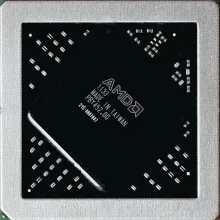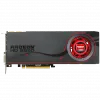
The AMD Cayman chipset, released in late 2010, is part of AMD's Radeon HD 6900 series graphics cards. It represents a significant evolution from AMD’s previous architectures, offering substantial improvements in performance, efficiency, and visual quality.
The Cayman chipset is built on a 40nm manufacturing process, which was a standard at the time, and features a complex architecture designed to enhance gaming and multimedia experiences. It includes two main graphics processors: the Radeon HD 6950 and the Radeon HD 6970. These GPUs are equipped with a total of 1,536 and 1,792 stream processors, respectively, which significantly boosts their parallel processing capabilities. This architecture supports DirectX 11, enabling advanced graphical features and improved performance in compatible games and applications.
One of the key innovations of the Cayman chipset is its support for AMD's TeraScale 2 architecture, which includes improvements in both shader performance and memory bandwidth. This architecture incorporates a higher number of texture units and a larger memory interface, enhancing texture processing and overall rendering capabilities. The chipset also supports AMD’s Eyefinity technology, which allows users to connect multiple monitors for an expansive, immersive visual experience.
Another notable feature is its support for AMD’s Radeon HD 6000 series technologies, including support for high-definition video playback and hardware acceleration. This makes the Cayman chipset well-suited for both gaming and media consumption, providing smooth, high-quality visuals.
In terms of performance, the Cayman chipset was positioned to compete with NVIDIA’s offerings in the high-end graphics market. While it is now considered outdated compared to newer technologies, it played a crucial role in advancing GPU technology and performance during its era.
